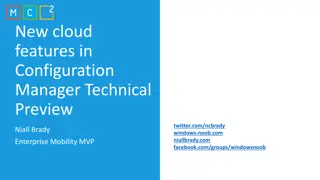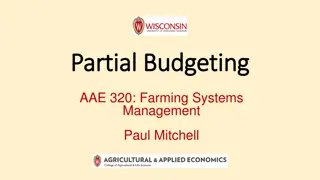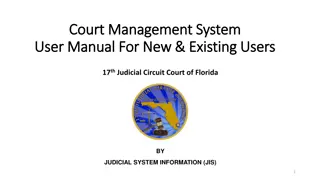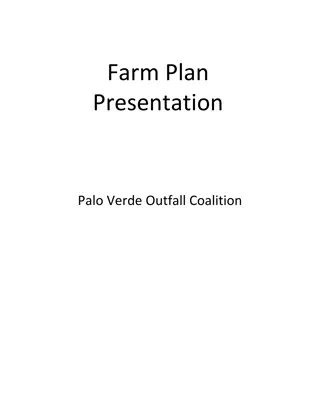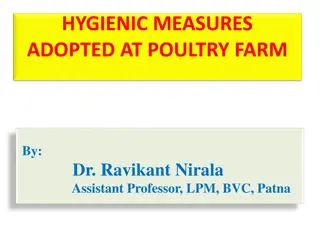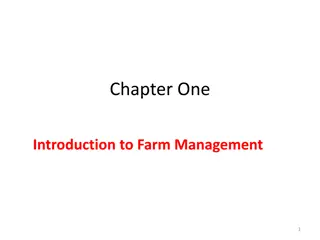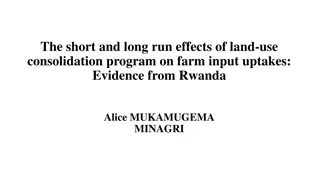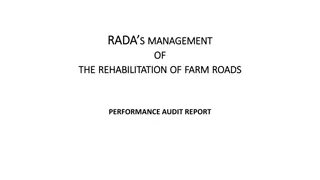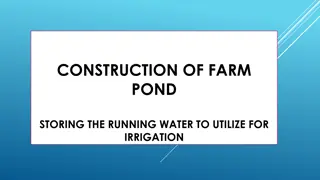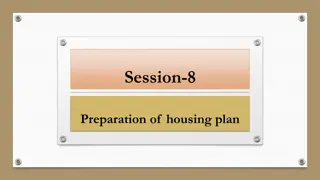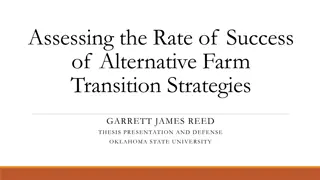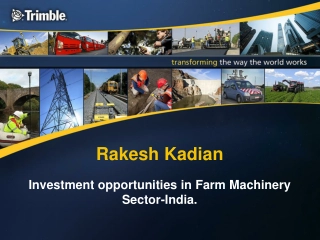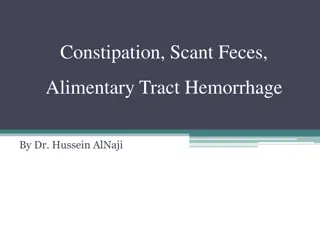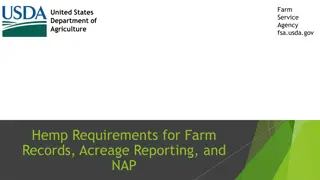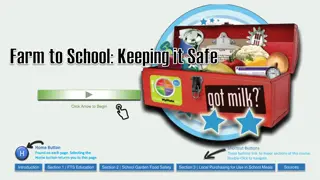
Ford New Holland Series 7413 Quick Attach Farm Loader Operator’s Manual Instant Download (Publication No.42741311)
Please open the website below to get the complete manualnn//
Download Presentation

Please find below an Image/Link to download the presentation.
The content on the website is provided AS IS for your information and personal use only. It may not be sold, licensed, or shared on other websites without obtaining consent from the author. Download presentation by click this link. If you encounter any issues during the download, it is possible that the publisher has removed the file from their server.
E N D
Presentation Transcript
FORD FORO I\EW HOLLAf\D Operator's Manual Quick Attach Farm Loader Series 7413 .. \"'- .. .. ....... , ... _.. ..... " " , , . ~ :- ........... ~ : '"1Ia. ,""'" .. z.o-:.: .... ' ~ ~ 6 . . Reprinted
CONTENTS Page OWNER ASSISTANCE ........................................................................................................................... 3 INTRODUCTION ...................................................................................................................................... 4 SAFETY PRECAUTIONS ........................................................................................................................ 5 OPERATION ....................................................................................................................................... 6-13 Preparing Tractor .............................................................................................................................. 6 Operating Loader ......................................................................................................................... 6-1 0 Filling Bucket .......................................................................................................................... 6-7 Lifting Load ................................................................................................................................ 7 Carrying load ............................................................................................................................ 7 Dumping Bucket ........................................................................................................................ 7 lowering Bucket ........................................................................................................................ 8 Operating With Float Control ..................................................................................................... 8 loading From A Bank ............................................................................................................. 8-9 Peeling And Scraping ................................................................................................................ 9 Backgrading ............................................................................................................................... 9 loading low Trucks Or Spreaders From A Pile ........................................................................ 9 Backfilling .............................................................................................................................. 9-1 0 Handling large Heavy Objects ................................................................................................ 10 Operating Grapple Fork ............................................................................................................. 11-13 Intended Use ........................................................................................................................... 11 Grasping Round Bales ............................................................................................................ 11 lifting And Carrying load ................................................................................................... 11-12 loading Into Tub Grinder ......................................................................................................... 12 Stacking Bales ......................................................................................................................... 12 loading From A Stack, Bunker Silo Or Pit Silo ....................................................................... 13 MAINTENANCE ................................................................................................................................ 14-15 Daily Maintenance .......................................................................................................................... 14 Troubleshooting .............................................................................................................................. 15 SERViCE ........................................................................................................................................... 16-20 Cylinder Service ......................................................................................................................... 16-17 Optional Control Valve Service .................................................................................................. 18-19 Self-leveling Valve Service ............................................................................................................ 20 ASSEMBLY ...................................................................................................................................... 21-41 Installing loader Mounting Brackets .......................................................................................... 21-22 Installing loader Onto Mounting Brackets ................................................................................. 23-24 loader Main Frame ......................................................................................................................... 25 loader Main Hydraulic System .................................................................................................. 26-27 Self-leveling Adjustment ................................................................................................................ 27 Remote Control Valve Detent Conversion ................................................................................. 28-29 Optional In-Cab Auxiliary Control Valve Installation .................................................................. 30-31 Optional less Cab Auxiliary Control Valve Installation .............................................................. 32-33 Plumbing Optional Auxiliary Control Valve To Tractor Hydraulics ............................................ 34-35 Plumbing loader To Optional Auxiliary Control Valve .................................................................... 36 loader Quick-Attach Buckets and Bale Spear .......................................................................... 37-38 Attaching And Detaching Quick-Attach Buckets and Round Bale Spear ............................... 37 72" Manure Bucket With Tines And Dirt Plate ......................................................................... 37 84", 84" Heavy Duty & 96" Heavy Duty Material & 108" Snow Buckets ................................. 38 Quick-Attach Round Bale Spear .............................................................................................. 38 Optional Grapple Fork ................................................................................................................ 39-41 Grapple Fork Frame ................................................................................................................ 39 Grapple Fork Hydraulic System .......................................................................................... 40-41 DISMOUNTING AND MOUNTING lOADER ................................................................................... 42-43 SPECIFICATIONS ................................................................................................................................. 44 SAFETY DECALS ................................................................................................................................. 45 2 F-2748-5-92
OWNER ASSISTANCE We at Ford New Holland and your Ford New Holland dealer want you to be completely satisfied with your investment. Normally any problems with your equipment will be handled by your dealer's Service Depart- ment. Sometimes, however, misunderstanding can occur. If your problem has not been handled to your satisfaction, we suggest the following. 1. Contact the owner or General Manager of the dealersh ip, explain the problem, and request assistance. When additional assistance is needed, your dealer has direct access to our branch office. 2. If you cannot obtain satisfaction by doing this, contact the Ford New Holland branch office in your area and provide them with: Your name, address, and telephone number Machine model and serial number Dealership name and address Machine purchase date and amount of use Nature of problem Atlanta 2000 Mountain Ind. Blvd. Tucker, GA 30084 Telephone: (404) 723-3615 San Francisco P.O. Box 6100 Fairfield, CA 94533 Telephone: (707) 423-9200 Dallas P.O. Box 10227 Dallas, TX 75207 Telephone: (214) 939-4919 Calgary Box 1616, Main P.O. Calgary, AB CANADA T2P 2M7 Telephone: (403) 569-3208 Minneapolis P.O. Box 1342 Minneapolis, MN 55440 Telephone: (612) 887-4232 Toronto - Sub-Branch P.O. Box 3610 Guelph, ON CANADA N1H 6P1 Telephone: (519) 767-4824 New Holland 500 Diller Avenue New Holland, PA 17557 Telephone: (717) 285-8302 3. If you need further assistance contact: Service Department Mail Station 500 Ford New Holland, Inc. New Holland, PA 17557 When contacting Ford New Holland's branch office or Service Department, be aware that your problem will likely be resolved in the dealership using the dealer's facilities, equipment, and personnel. So it is important that your initial contact be with the dealer. A Service Publications Catalog & Order Form is available which lists the operator's and service manuals for many prior model and most current model Ford - New Holland - Versatile tractors, equipment, and con- sumer products. To obtain a copy of this catalog, please call 1-800-635-4913.
https://www.ebooklibonline.com Hello dear friend! Thank you very much for reading. Enter the link into your browser. The full manual is available for immediate download. https://www.ebooklibonline.com
INTRODUCTION This manual provides operation, maintenance, assembly and parts identification for your new loader. If at any time, you have a service problem with your loader, or need new parts, contact your local Ford New Holland Americas equipment dealer. Your Ford 7413 Loader with Quick Attach Feature is designed for use on Ford 7840, 8240 & 8340 FWA and 8340 FWA tractors and Ford 8730, 8830, TW25 & TW35 2WD and FWA tractors. Your dealer will need your loader model, serial number and component number* to give you prompt efficient service. Record your serial and component numbers below. Also record date of purchase. Successful operation and long life of your loader depends, of course, on proper operation and the care given it. Please read this manual carefully and follow all instructions. Correct op- eration and maintenance will save much time and expense. A MESSAGES in this manual. OBSERVE and FOLLOW all SAFETY MESSAGES to prevent personal INJURY. MODEL NO. 7413 SERIAL NO. ThiS SAFETY ALERT SYMBOL identifies IMPORTANT SAFETY o o COMPONENT MADE IN U.S.A. Reference to left and right used in this manual refer to position when standing at rear of unit facing forward, unless otherwise specified. * Your loader serial and component numbers are stamped on this plate located on inside of left boom arm. DATE PURCHASED -------------------- Series 7413 Loader Mounted on a Ford Tractor 4 F-2748-5-92
SAFETY PRECAUTIONS --------, Following are precautions suggested to help prevent accidents. 5. Allow for loader length when making tums. A careful operator operates best. Most accidents can be avoided by observing certain precautions. Read all precautions that follow before operating your tractor and loader to help prevent accidents. Equipment should be operated only by those who are responsible and instructed to do so. 6. Stop loader arms gradually when lowering or lifting. 7. Use caution when handling loose or shiftable loads. 8. Carry bucket or attachment at a low position during trans- port for better visibility. GENERAL 9. When parking or servicing, lower bucket to ground, stop engine and set park brakes before leaving tractor seat. 1. Read your Operator's Manuals carefully before using trac- tor or loader. Lack of operating knowledge can lead to accidents. 10. Operate loader controls only when properly seated at controls. 2. Replace damaged or illegible safety decals. See page 45 for required decals. 11. USing front end loaders without special attachments for handling large heavy objects such as large round or rec- tangular bales, logs and oil drums is NOT RECOM- MENDED. 3. Operate tractor and loader only from operator's seat. TRACTOR 12. Handling large heavy objects can be extremely dangerous due to: Danger of rolling tractor over. Danger of upending tractor. Danger of objects rolling or sliding down loader arms onto operator. 1. Use an approved roll bar and seat belt for safe operation. Overtuming a tractor without a rollbar can result in death or injury. If your tractor is not equipped with a rollbar and seat belt, see your Tractor Dealer. 2. Equip your tractor with FOPS (Falling Object Protective Structure) before installing or operating loader. 13. If you must perform this sort of work (see 12 above), protect yourself by: Use proper attachments only. Never lift load higher than necessary to clear ground when moving. Ballast tractor rear to compensate for load. Never Uft large objects with equipment that does not have an anti-rollback device. Move slowly and carefully, avoiding rough terrain. 3. Always use seat belt when rollbar is installed. Do not use seat belt if rollbar is removed from tractor. 4. Add recommended wheel ballast and/or rear weight as recommended in owner's manual to provide good stability. 5. Move rear wheels to widest settings recommended by Ford New Holland Americas to increase stability. 6. Move and turn tractor at low speeds. LOADER MAINTENANCE 1. Improper use of a loader can cause serious injury or death. 1. When servicing or replacing pins in cylinder ends, buckets, etc., always use a drift and hammer of non-sparking mate- rial. Failure to do so could result in injury from flying metal fragments. 2. Do not lift or carry anybody on loader, in bucket or on attachment. 3. Never allow anyone to get under loader bucket or reach through lift arms when bucket is raised. 2. Do not modify or alter or permit anyone else to modify or alter loader or any of its components or any loader function without first consulting a Ford New Holland Dealer. If you have any questions regarding loader modifications contact Ford New Holland Americas. 4. Do not walk or work under a raised loader or bucket or attachment unless it is securely blocked or held in position. 5. Avoid overhead wires and obstacles when loader is raised. Contacting electric lines can cause electrocution. 3. Always wear safety goggles when servicing or repairing tractor or loader. 6. Make sure all parked loaders are on a hard, level surface. Engage all safety devices. 4. Escaping hydraulic/diesel fluid under pressure can pene- trate skin causing serious personal injury. DO NOT use your hand to check for leaks. Use a piece of cardboard or paper to search for leaks. Stop engine and relieve pressure before connecting or disconnecting hydraulic or diesel lines. Tighten all connections before starting engine or pres- surizing lines. If any fluid is injected into skin, obtain medical attention immediately or gangrene may result. OPERATING LOADER 1. As owner of this loader, it is your responsibility to be certain anyone operating this loader has read this manual first to be aware of safe operation of your tractor and loader. 2. Exercise caution when operating any loader with a raised loaded bucket or fork. 3. Avoid loose fill, rocks and holes. They can be dangerous for Icader operation or movement. 5. Do not tamper with relief valve setting. Valve relief is factory-set. Changing relief setting can cause overloading of your tractor or loader and serious operator injury may result. 4. Use care when operating on steep grades to maintain proper stability. Always carry bucket or attachment as low as possible. Whenever you _this symbol Aft me.ns: ATTENTION! BECOME ALERT! YOUR SAFETY IS INVOLVED! 5 F-2748-5-92
--------OPERATION -------- INSTALL COUNTERBALANCE A total weight of tractor, loader and rated load is on rear wheels when bucket contains rated load and is in maximum forward position. PREPARING TRACTOR PRIOR TO OPERATION A WARNING: Read all operator's manuals before in- "specting, servicing or operating loader and tractor. WARNING: Before operating tractor and loader, add sufficient counterweight so a minimum of 25% of INSPECTION Sufficient weight can be added to tractor by filling rear wheels with liquid ballast, installing wheel weights or 3-point hitch counterweight. If 3-point hitch counterweights are used, they should be carried as low as possible at a" times to maximize stability. Thoroughly inspect your fully assembled tractor and loader prior to operation. 1. Check a" hardware to be sure that it has been properly installed and tightened. Retighten a" hardware after 10 hours of initial operation. Effective counterbalance weight of mounted rear equipment is determined by multiplying actual weight of equipment by 1.50. 2. Check tire pressure. Refer to tractor operator's manual for recommended pressures. EXAMPLE: Equipment weighing 800 pounds, attached to rear of tractor, multiplied by 1.50, equals 1200 pounds of effective counterbalance weight. 3. Review tractor lubrication schedule and consult MAINTE- NANCE section of this manual to be certain a" pivot points have been properly lubricated. After adding recommended counterweight, weigh tractor at rear axle to be sure counterbalance is adequate. With bucket empty and in carry position, minimum tractor rear axle weight should be 8,500 Ibs. for 7840,8240 & 8340 FWA tractors and 13,000 Ibs for 8730, 8830, TW25 & TW35 2WD & FWA tractors. 4. Use instructions listed in MAINTENANCE section of this manual to check a" hose and tubing connections to insure no leaks are present. 5. Be sure FOPS (Falling Object Protective Structure) is in- stalled. A WARNING: Front axle tread setting must not exceed .. 76-(1.93 m) on 7840, 8240 and 8340 FWA tractors. OPERATING LOADER Loaders with 1-lever control, ease lever back and toward you to lift and curl bucket. This loader should be operated with tractor engine running at 1700-2200 rpm. Excessive speeds are dangerous, and may cause bucket spillage and unnecessary strain on bucket and loader. When operating in temperatures below 3O'F., run tractor engine below 1200 rpm until oil temperature exceeds 30'F. Text and illustrations which follow offer suggested loader and tractor operating techniques. ROLLBACK FILLING BUCKET Loaders with 2-lever controls, ease both levers of tractor remote valve back to lift and curl bucket. Approach and enter a pile with bucket level. ROLLBACK UFT 6 F-2748-5-92
--------OPERATION ... a level bucket throughout lift cycle resists bucket lift and increases breakaway effort. Use extreme care when operating loader on a slope, keep bucket as low as possible. This keeps center of gravity for loader, bucket and tractor low and will provide maximum tractor stability. A overtum. NOTTHIS WARNING: Operating a loader on a hillside is da" gerous. Extreme care is recommended to avoid NOTE: Do not be concerned if bucket is not completely filled during each pass. Maximum productivity is determined by how much material is loaded in a given period of time. Time is lost if two or more attempts are made to fill bucket on each pass. LIFTING LOAD DOTHIS NOT THIS When lifting load, keep bucket positioned to avoid spillage. . . . ,. ,,' , When transporting a load, keep bucket as low as possible to avoid tipping, in case a wheel drops in a rut . . ~ . . -. '., ~ " - ; : ' - ' . DO THIS NOTTHISI . lS- I I A CAUTION: Do not attempt to lift bucket loads in excess .. of loader capacity. DUMPING BUCKET Lift bucket high enough to clear vehicle side. Move tractor in as close as possible to side of vehicle, then dump bucket. 7 F 2748 5-92
-------- OPERATION LOADING FROM A BANK LOWERING BUCKET After bucket is dumped, back away from vehicle while lower- ing and curling bucket. 'LOWER , Choose a forward gear that provides sufficient ground speed for loading. FLOAT POSITION. DUMP ROLLBACK Exercise caution when undercutting high banks. Dirt slides can be dangerous. Load from as low as possible for maximum efficiency. Loader lift and break-away capacity diminish as loading height is increased. FLOAT POSITION OPERATING WITH FLOAT CONTROL During hard surface operation, keep bucket level and put lift control in float position to permit bucket to float on working surface. If hydraulic down pressure is exerted on bucket it will wear faster than normal. Sidecutting is a good technique for cutting down a big pile. Using loader float position will also prevent mixing of surface material with stockpile material, and will reduce surface goug- ing when removing snow or other material. If pile sides are too high and liable to cause cave-in, use loader to break down sides until a slot can be cut over top of pile. SURFACE MATERIAL Another method for large dirt piles is to build a ramp approach to pile. 8 F-2748-5-92
--------OPERATION -------- DOTHISI . ... .... .- ..... .... . ... Do not roll bucket over and attempt to backgrade. This type of use can cause severe overloading of bucket cylinders when fully extended, possibly causing bucket cylinder rods to be- come bent. It's important to keep a level bucket when approaching a bank or pile. This will help prevent gouging work area. PEELING AND SCRAPING NOTTHIS! I + 6" -- LOADING LOW TRUCKS OR SPREADERS FROM A PILE -.. , Use a slight bucket angle, travel forward, and hold lift control forward to start cut. Make a short, 5 to 8 foot, angle cut and break-out cleanly. ~ & ""., 1:. . .;.. ~ With bucket level, start a cut at notch approximately 2" deep. Hold depth by feathering bucket control to adjust cutting lip up or down. When front tires enter notch, adjust lift cylinder to maintain proper depth. For faster loading, minimize turn angle and run length be- tween pile and spreader. . 4th Cut. etc . - - - - 3rd Cut - - , "\. '" - - - - - - - - ~ - - - - - ~ - - - . ...... ..... "\. "\. BACKFILLING " I,' Approach pile with a flat bucket. Make additional passes until desired depth is reached. During each pass, only use bucket control while at working depth. This will allow you to concentrate on controlling bucket angle to maintain a precise cut. DO THIS! BACKGRADING Backgrade occasionally with a loaded bucket to keep working surface free of ruts and holes. Also, hold lift control forward so full bucket weight is scraping ground. Use bucket heel. Poor methods actually move no more dirt and make it more difficult to hold a level grade. 9 F-2748-5-92
--------OPERATION -------- NOT THIS! Do not use bucket in dumped position for bulldozing. This method, shown above, will impose severe shock loadings on dump linkage, bucket cylinder, and tractor. Pile dirt on high side for easier backfilling on a slope. A WARNING HANDLING LARGE HEAVY OBJECTS 1. Using front loaders for handling large heavy objects such as large round or rectangular bales, logs and oil drums is not recommended. 2. Handling large heavy objects can be extremely dangerous due to: Danger of rolling tractor over. Danger of upending tractor. Danger of objects rolling or sliding down loader arms onto operator. 3. If you must perform any work listed above, protect yourself by: Use proper attachments only. Never lift load higher than necessary to clear ground when moving. Ballast tractor rear to compensate for load. Never lift large objects with equipment that does not have an anti-rollback device. Move slowly and carefully, avoiding rough terrain. Leave dirt in bucket because dumping on each pass wastes time. Operate at right angles to ditch. Take as big a bite as tractor can handle without lugging down. , ~ U .iG , , I' I , , , , , . ' ~ ' ;' I , , ., . ' I I , , . I I' , , ' , ' " " . , I , " :' / Leave dirt which drifts over bucket side for final clean-up. 10 F-2748-5-92
-------- OPERATION GRASPING ROUND BALES OPERATING GRAPPLE FORK Approach bale with grapple fork open and bucket level. Use loader float position if bale is on ground. Operation of your tractor and loader with grapple fork option requires some same basic considerations as operation with a bucket, plus two new requirements: you now have to operate a grapple fork while already operating your tractor and loader; and you must also take into account additional space require- ments (added length and height) needed because of attached grapple fork. INTENDED USE Use of this loader without special attachments for handling large heavy objects such as large round or rectangular bales, logs and oil drums is NOT RECOMMENDED. Handling large heavy objects can be extremely dangerous due to: Danger of rolling tractor over. Danger of upending tractor. Danger of objects rolling or sliding down loader arms onto operator. If you must perform any work listed above, protect yourself by: Never lift load higher than necessary to clear ground when moving. Ballast tractor rear to compensate for load. Never lift large objects with equipment that does not have an anti-rollback device. Move slowly and carefully, avoiding rough terrain. Ease valve control lever for grapple fork forward to close grapple fork around bale. CLOSE NOTE: While large round bales are best grasped as shown above, they may also be grasped from either end if necessaty. DO NOT ATTEMPT TO LIFT MORE THAN ONE LARGE ROUND BALE AT A TIME as this can cause overloading of loader or tractor or cause unstable conditions. SPECIAL ATTACHMENTS FALLING OBJECT PROTECTIVE R U C T U R E BUILT INTO CAB ~ S T nNE CLAMP REAR BALLAST - REAR WHEEL WEIGHTS OR 3-POINT HITCH BALLAST Using special attachments as shown, and exercising caution, your loader can be used to handle large round or rectangular bales and loose bulky materials like hay and silage. Do not attempt to use loader to handle logs, fertilizer bags or liquid containers since such use is NOT RECOMMENDED. NOTE: It is recommended to use both tine clamps if your grapple fork is to be used for handling round or rectangular bales. Using only one clamp may work better for loose hay or silage, allowing tines to penetrate better. Additional tine clamps are optional. Keep each grapple fork tine clamp se- curely fastened to grapple fork tines at all times. LIFTING AND CARRYING LOAD Ease both loader control levers back to lift and roll bucket back. \ , t 11 F-2748-5-92
--------OPERATION -------- Position bucket just below level of tractor hood for maximum stabilibility and visibility whether bucket is loaded or empty . , " Gradually open grapple fork tines, allowing material to drop into tub grinder. For round bales, it may be necessary to gradually set bale into tub grinder to avoid shock loading tub grinder due to bale weight and to avoid sudden load on grinder mechanism. Use extreme care when operating a loader on a slope, carry load as low as possible. This keeps center of gravity for bale, tractor and loader low and will provide maximum tractor stability. A overturns. CAUTION: Operating a loader on a hillside is dan- gerous. Extreme care is recommended to avoid Roll bucket back, close grapple fork and back tractor away from tub grinder, then lower loader boom after dumping. A Be aware of forces acting on stacked bales due to gravity and keep workers far from zones of potential hazard from shifting or falling bales. DO NOT AL- LOW BYSTANDERS! STACKING BALES DOTHIS WARNING: Because of size and weight of large bales, extreme care must be taken in handling them. Even on level ground, transport bucket and load as low as possible to avoid tipping in case a wheel drops in a rut and to avoid power lines. A WARNING: Keep bucket, grapple fork and loader boom clear of overhead lines. Allowing loader boom or any attachments to contact overhead power lines may electrify entire tractor and electrocute (kill) op- erator. Use loader and grapple fork to gently position bale on stack, then release bale while removing bucket and fork. LOADING INTO TUB GRINDER Lift bucket high enough to clear tub grinder sides. Move tractor toward tub grinder to position load near center. Extend bucket cylinders to position bucket in dump attitude. 12 F-2748-5-92
Suggest: If the above button click is invalid. Please download this document first, and then click the above link to download the complete manual. Thank you so much for reading
--------OPERATION -------- Slowly back tractor away from stack. Exercise caution when undercutting a high pile. Avalanching material can be dangerous . LOADING FROM A STACK, BUNKER SILO OR PIT SILO Choose forward gear that provides sufficient ground speed for loading. When loading material from ground, keep a level bucket and use lift control float position. If hydraulic down pressure is exerted on a bucket, it will wear faster than normal. Keep bucket level when approaching pile. Touch pile as near as possible to top with bucket positioned in dump attitude and grapple fork open. Close grapple fork while maneuvering bucket to grasp loose material. A taken not to grasp more material than your loader can safely support. CAUTlON: Loader lift and break-away capacity di- minish as loader height is increased. Care must be SURFACE MATERIAL Keeping a level bucket and using loader float will reducesur- face gouging and mixing surface material with stockpile ma- terial. An alternate method is to use your loader and grapple fork to knock material down from top of pile so it can be loaded from ground. When a sufficient amount of material has accumulated in front of bucket, close grapple fork to grasp material and curl bucket. 13 F-2748-5-92
https://www.ebooklibonline.com Hello dear friend! Thank you very much for reading. Enter the link into your browser. The full manual is available for immediate download. https://www.ebooklibonline.com

